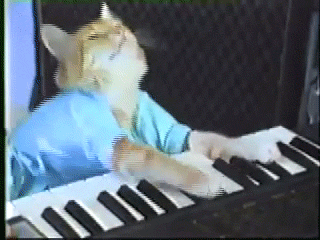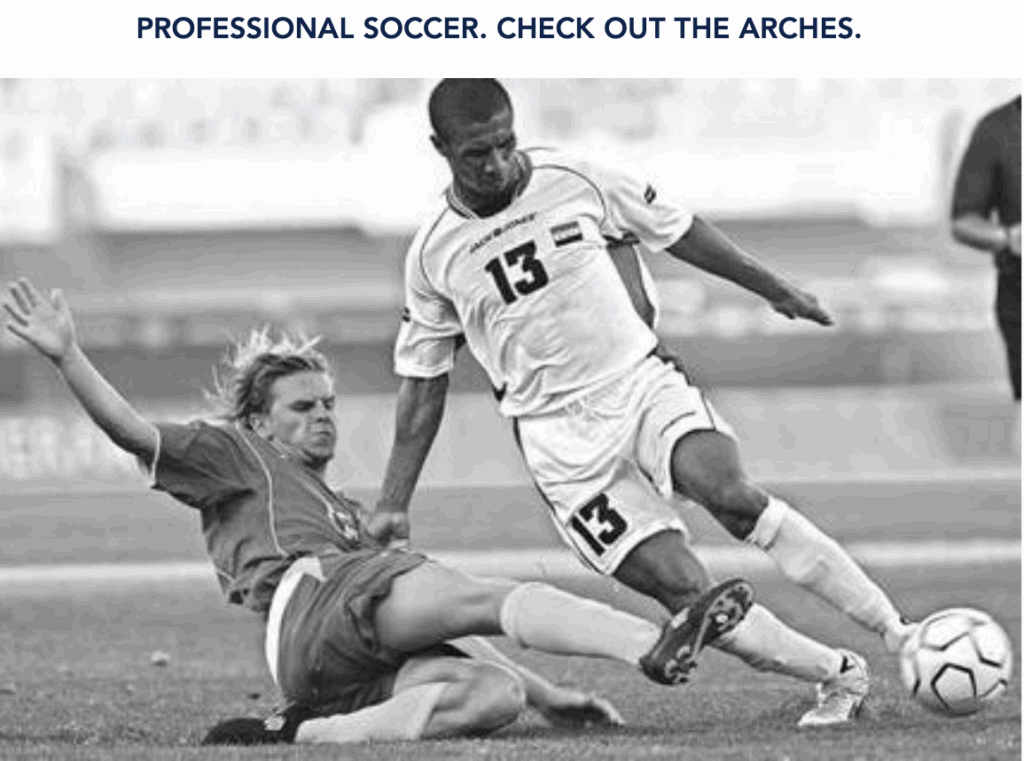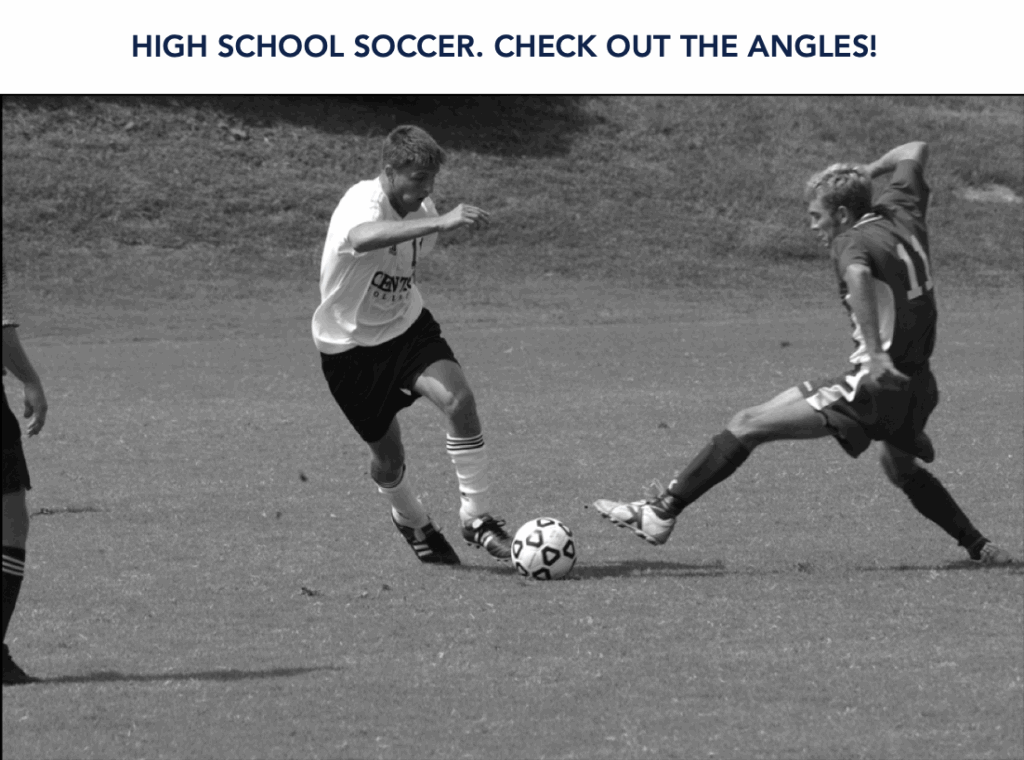How’s my running form? Well, that’s kind of a tough question. Your running form is like your fingerprint: i.e. unique. Thankfully there are common traits to great running form. So no matter how much your stride resembles a cat playing a piano right now, we can tighten things up and get that piano in tune. Let’s take it from The top.

Good form means what, excatly?
First let’s establish a definition of good running form. These are my 5 basic bullet points.
- Around 90 strides a minute (180 counting both feet).
- Foot lands underneath you and propels you forward.
- Stride is basically circular (legs recreate the wheel).
- You run quietly.
- You run tall (eyes on the horizon).
Cover those bases and you’re in good shape. Here’s why:
90 strides a minute
I taught a running class which I would always begin with a stride count. I never told anyone how many strides they should be shooting for; wanting them to run naturally, not perform for the sake of the drill.
What did I learn?
- Most people would count out about 15 strides.
- 15 strides in :10 (x 6)= 90 strides a minute.
- 90 strides a minute (one leg)= solid running form.
Wait a second! You said earlier that people have different leg lengths…
Different hip heights…
Some people over-pronate. Some under-pronate…
How is 90 strides a minute going to cover all of these different body types?
Because Jack Daniel’s said so.

Not thaaaat Jack Daniels.
Legendary running coach Jack Daniels.
Who is that Jack Daniels? Only the author of my favorite book on training runners. The Daniel’s Running Formula is a great book that every serious/moderately serious runner should read. I used the program in the back of this book back in college to get into the best shape of my life.
Dr. Jack on 90 strides a minute
“During the 1984 Olympics in Los Angeles, my wife and I spent every day of the running events counting different runners’ stride frequency, often several times for the same runner, during prelims and finals and also early and late in the same race. In all we examined about 50 runners, both male and female and in events from the 800 to the marathon. Of all the runners evaluated, only one took fewer than 180 steps per minute…
In our lab one time, I tested an Olympic gold medalist in the marathon. At a 7-minute-per-mile pace, the rate was 184; at a 6-minute pace, it moved up to 186; and at a 5-minute pace, it moved up to 190. This represented a 16.5 percent increase in running speed and a 3 percent increase in rate. It is quite clear that runners seem most comfortable with a particular rhythm, and that rhythm varies little as they change stride length to increase speed during different races…
Solid running form means your foot strikes underneath you. One reason I strongly emphasize trying to run with a stride rate around 180 steps per minute is to minimize the landing shock associated with running. Keep in mind that the slower the leg turnover, the more time you are spending in the air; the more time you spend in the air, the higher you are elevating your body mass; and the higher you elevate body mass, the harder you hit the ground on the next landing. Believe me, it is during the impact associated with hitting the ground that many little injuries occur.’
Start checking those boxes
So this checks boxes 1 and 2 from my five bullet points of good form. 90 strides a minute, as noted above, means that your foot is striking underneath you and then moving you forward with minimal shock. Should your foot land in front of you it brakes your momentum, slows you down, and increases landing shock.

Quiet
Your foot landing in front of you brakes your momentum that makes NOISE. So do weak feet and shins that can’t efficiently decelerate you properly. Loud running is hallmark of inefficiency and bad running form..
Conversely, an efficient stride is quiet. The foot landing underneath transfers momentum efficiently and quietly.
Running on the treadmill can effectively diagnose an inefficient stride. How? The treadmill amplifies your footfall. You can hear bad running form on a treadmill.
More words from Dr. Jack on efficient strides:
‘So, how do you minimize landing shock when running? A simple way of explaining it is to pretend you are rolling over the ground rather than bounding from foot to foot. Try to avoid placing each foot out in front of yourself, which often acts as a breaking action, increasing the impact force as you go from one foot to the other. Try to have your feet land closer back, toward your center of gravity, so your body is floating (or rolling) over your feet. you and propels you forward. Usually this happens when you run at 90 strides or more.’
There is nothing wrong with more than 90 strides a minute btw.
There is nothing wrong with fewer than 90 strides. I taught my running class for about 18 months, and in that time I only had 3 people who were consistently under 90. The lowest recorded was 84, and he was arguably the 2nd fastest guy to take the class. You should be around 90. A little less, a little more, you’ll be okay.
But if you’re around 90 and hitting the ground HARD.
Or LOUD.
Then shorten your stride, spend less time in the air and run lighter. Run quieter. Moving on.
An efficient running stride resembles a wheel.
Z Health Creator Eric Cobb studied the movement of athletes who performed at the top of their sports for over ten years.
Why only the best athletes? Because to play at the top level, you must move well.
Why ten years of performance? Because longevity is further proof that they are moving efficiently.
So he only looked at the best of the best. And what did he find?
That great athletes recreate the wheel. The wheel is, according to physics, the most efficient way to move forward. The greats move in arches, not angles. Smooth, functional, and controlled arching movements are optimized for rotation, an important aspect of healthy movement.


From the manual:
‘look for arches vs. angles in the human body. Curving arches or arcs of motion that engage all the joints of the moving area are efficient. Angles, on the other hand, usually indicate a loss of mobility in a joint or in a series of joints that are important to the motion.’
Arches (like wheels and circles) are fluid and efficient. Not wearing down on the joints or muscles with unnecessary landing shock. This is how the best athletes move. This is what you should aspire to.
And that brings us to:
RUN TALL
Most people run efficiently early on (hence the good stride count on just about every runner).
Then fatigue happens. Fatigue leads to threat posture. Threat posture leads to bad form.

What’s threat posture (right)?
It starts with fatigue. When you tire you get stressed out. When your body experiences any kind of stress 2 things will happen:
- Your body flexes.
- Your body adducts.
In plain speak: As the runner shown above fatigues notice her shoulders round inward and her posture stoop forward. That’s what I mean by flexion and abduction. Your body reverts to the fetal position where hard parts protect soft parts.
You can’t run efficiently when in this posture. The head drops, shoulders round forward, the spine sags, and the hips tighten (so you run with your butt sticking out). Focus on running tall instead. The taller you run the less you inhibit your own stride. Your movement is free and fluid.
PS- Running tall helps your mental game as well. This TED talk illustrates how our posture dictates our attitude. If we create great posture then our attitude will follow suit.
Run tall. Shoulders back, hips tucked under you. Think positive, and when your mindset starts to slip, fix your posture.
Now What?
It’s one of those beautiful days, not a cloud in the sky, the air is crisp, the thermometer is in the magic zone between 50 and 65. Your gear is on. You are swearing to yourself that today you’re going to run with the best form? This time you’re going to do it all right. You’re gonna run tall, and quiet, and soft.
But then you get distracted by your watch, you get thirsty, or you stop to check for traffic.
You stop thinking about your running form.
10 minutes later you remember that you were going to focus on form. Shit! Refocus!
Then you see a cute runner, or a funny shaped cloud, or you wonder how far you’ve gone. Another :10 goes by and you haven’t focused on your form.
I’ve forgotten more info about good running form than most people care to read and sometimes my form still sucks because let’s face it: you get tired, distracted, you run on uneven surfaces, or you get a calf cramp. All of that knowledge goes out the window because realistically you can’t focus on running form for more than 100 meters. I’ve tried. So what do we do?
Schedule some form checks.
Every time your watch clicks off a mile focus on the 5 bullet points for as long as you can. Then don’t worry about it.
I’ll often do a stride count when I’m struggling.
Run a lot.
I talk a lot about the SAID principle, i.e. the body Specifically Adapts to Imposed Demands. By running more you force your body to adapt to running more. You will become a more efficient runner by running more.
Rocket science this is not.
Run fast.
SAID principle back in action. Fast running must be efficient. Speed doesn’t allow for poor mechanics. Speed streamlines everything. Your body is pretty smart- it will iron out many of your inefficiencies when tasked with running fast.
Schedule in some interval training or hill runs. The more you do this the more your body will adapt to make you faster (SAID principle). These intervals don’t have to be long.
Mobilize your joints.
Jammed joints create global weakness and instability. That’s the arthrokinetic reflex. Most important is to open up the joints in your feet.
And finally attitude creates posture and posture creates attitude. So…
RUN TALL
You know why.
When you have tall posture you feel great.
When you feel great you run great.
But seriously… sometimes running sucks. When it sucks you’ve got to get tough. Don’t grit your teeth or punch your chest or other stuff that is stereotypically “tough”.
The toughest thing you can do is remain upbeat and positive when you don’t want to.
Remember that life is great.
You’re not running for your life.
You’re running for a goal! Or to keep yourself fit. Or to manage your stress.
I know, I know, I know… running can be a challenge.
And boring.
But every now and then you take a deep breath. Have a look around. Enjoy the view.
You may just find yourself standing a little taller, light on your feet (quiet), with an elliptical stride (90/min).
And in that moment you may ask yourself, ‘How’s my form?’
You already know. You can feel it.